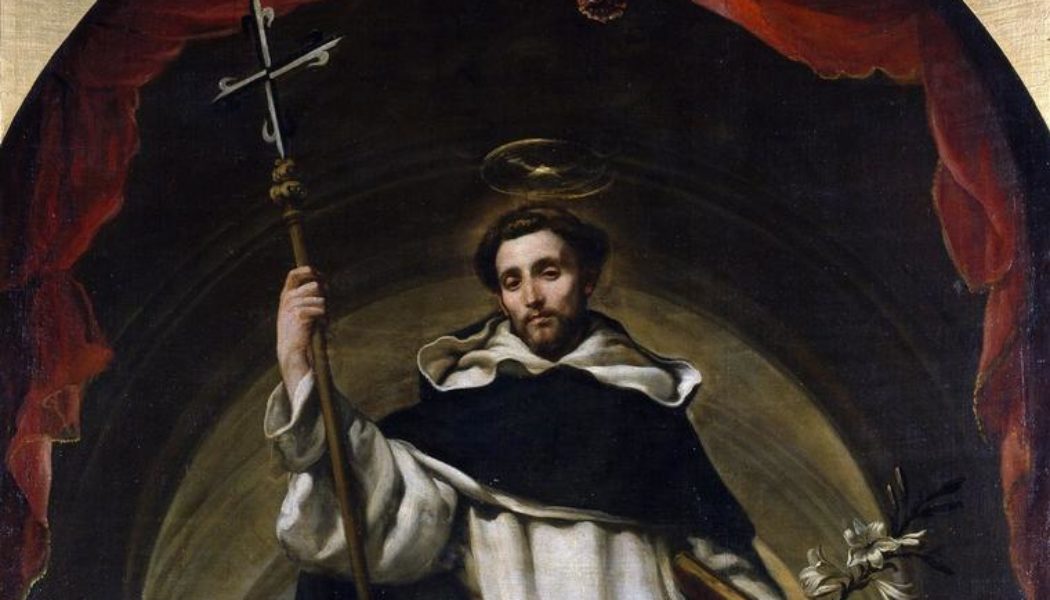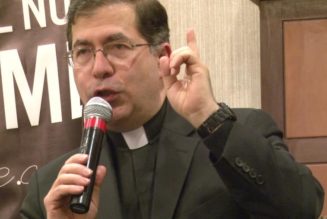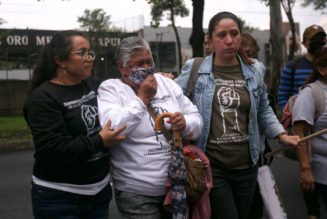
In the apse of St. Peter’s Basilica in Vatican City, just to the right of the chair of St. Peter, stands an 18-foot statue of St. Dominic de Guzman. Erected nearly 500 years after the Spanish saint’s death in 1221, the sculpture serves as a testament to the towering, enduring spiritual figure St. Dominic was destined to become in the Church.
Signs of his exceptionality appeared even before he was born. The saint’s mother, Blessed Jane of Aza, dreamed of giving birth to a dog bearing a burning torch in its mouth that raced to the four corners of the world, setting it on fire with the Gospel. She named her son Dominic — from the Latin Domini canis (“dog of the Lord”).
The eight-pointed star ever-present in images of St. Dominic derives from his godmother who, at Dominic’s baptism, beheld a vision of a radiant star illumining the boy’s brow and suffusing the world with the light of Christ.From his youth, Dominic discerned and pursued a vocation to the priesthood.
Early on, God made clear the heroic gift of self he would ask of Dominic as an antidote to the sufferings of the world. When the student Dominic encountered people who were starving, he sold his invaluable books in sacrifice to feed them.
Overcome with compassion for a woman whose brother had been taken captive, Dominic offered to have himself sold into slavery. The papal bull published at St. Dominic’s canonization states: “While he was still young in years, he bore in his boyish breast the heart of a mature man. Choosing a life of continual mortification, he sought the Creator of all life. He strove to approach God while remaining bound to his neighbor by the cords of a wise compassion.”
The turning point came in Dominic’s confrontation with dualistic Cathar heretics in southern France, known as Albigensians. Albigensianism reduces the world to an unrelenting conflict between two contending forces: matter, which is Satanic, and spirit, which is good. For Albigensians, the human soul lies imprisoned in the body; salvation entails recovering “pure” spirituality by extricating it from flesh. Accordingly, it was the duty of the Albigensian to destroy life through self-inflicted death. A woman with child was regarded as being possessed by the devil. Infants were murdered as the personification of evil. Marriage, owing to its role in procreation, was criminal (not that that stopped Albigensians from indulging in promiscuous sexual activity). Conversely, Albigensians esteemed suicide (especially starvation) and murder, since both eliminated matter. Not much has changed. In effect, Albigensians were precursors of the current culture of death. Consider this statement: “Choices once unanimously considered criminal and rejected by the common moral sense are gradually becoming socially acceptable” — an apt assessment of the atrocity of Albigensianism. But that’s a line from Pope St. John Paul II’s 1995 encyclical The Gospel of Life (4).
This is what stopped Father Dominic in his tracks during pastoral trips. Some years earlier, St. Bernard of Clairvaux met failure in attempting to preach to the Albigensians: “The basilicas are emptied of the faithful; priests are without honor; the sacraments are despised; people die in their sins.”
Tragically, his lament echoes to our own day.
St. Dominic realized this to be the vineyard in which the Father was sending him to labor. He immediately understood that, to be a credible witness, he must assume an austerity and integrity of life beyond reproach. In prayer he was to plumb the mystical depths of the Gospel of Matthew and the epistles of St. Paul, which he carried with him always, along with the Conferences of fifth-century ascetic John Cassian.With proper permissions, Dominic began to preach.
It can be said that Dominic’s years of work among the Albigensians were not overwhelmingly fruitful — there is no record of mass conversions.
But St. Dominic intuited a crisis in his day that continues to ravage our own. Pope St. John Paul II described it in a 2001 message to the Dominican Order: “We live in a time marked in its own way by a denial of the Incarnation. … Many claim to admire Jesus and to value elements of his teaching. Yet Jesus remains distant: He is not truly known, loved and obeyed. … Ours is an age which denies the Incarnation in a multitude of practical ways, and the consequences of this denial are clear and disturbing.”
With unyielding reliance on divine Providence, St. Dominic persevered in his preaching. George Bernanos wrote about Dominic: “He doesn’t appear to have any plan, and he never knows where his way is leading. But he has something better than any plan: radical detachment, interior freedom.” St. Dominic was convicted by the Veritas at the core of reality. Pope Benedict XVI said, “Christ, in fact, is the most precious good that the men and women of every time and every place have the right to know and love!”
In St. Dominic’s heart, the Albigensians were not opponents to be put down but wayward neighbors to win over to intimacy with Jesus Christ. Dante captured it in referring to St. Dominic as “messenger and friend fast-knit to Christ.”
Dominic’s successor as master general of the Order of Preachers, Blessed Jordan of Saxony, attests: “God gave Dominic the singular grace of weeping for sinners, the unfortunate, and the afflicted. His heart was filled with an admirable and almost incredible desire for the salvation of all people. He carried their miseries in the sanctuary of his compassionate heart.”
We need one of those.
A contemporary of St. Dominic claimed, “I never knew a man so humble or who had more detachment from the things of the world. He received abuse, curses, or reproach not only patiently but with joy, as though they were precious gifts. No persecution troubled him. He went about serene and intrepid in the midst of dangers and never turned out of his way through fear.” Hence the famous story of St. Dominic, ambushed by Albigensians, who demanded, “What would you have done if we had captured you?” St. Dominic’s stymying reply: “I would have asked you not to kill me all at once, but to cut me up member by member, so as to give me a lingering martyrdom.”
These are the virtues we need today: certainty, constancy, fearlessness, courage, conviction, joy and intrepid trust in Jesus Christ.
As Dominic would urge his brothers, crossing from side to side in the chapel during the chanting of Divine Office: Fortiter! Fortiter! (“Bravely! With greater conviction!”). Before long, St. Dominic attracted followers — both sisters and friars — whom he formed into the Order of Preachers.
The Incarnation and its mysteries remain at the very core of the Dominican charism — hence the centrality of the Eucharist in Dominican life. Also, a passion for the Passion and cross of Christ; ardent devotion to the Blessed Virgin Mary and her Rosary; penitential observances; and assiduous study ordered, not to making people smarter, but to making them saints.
The gift of contemplation is integral to Dominican spirituality: “Contemplation does not come from the activity of the intelligence, but from purity, from freedom from the senses, from love” (M.-V. Bernadot). Let’s dare with St. Dominic to contemplate and share with others the fruits of contemplation.
Join Our Telegram Group : Salvation & Prosperity








